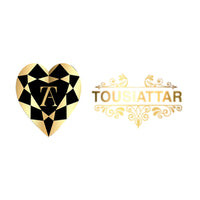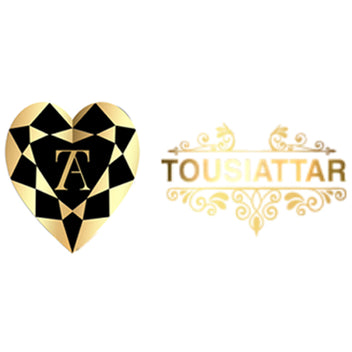Jewelry Metal Education
While TousiAttar Jewelers uses only the highest quality precious metals in our fine jewelry, you may prefer one kind of metal, or you may be surprised to discover a new favorite among the wide range of metals used in jewelry today. We understand that the choice between the various metals can be confusing. Understanding the qualities of each different jewelry material can help ensure that the piece you select today will offer a lifetime of joy and satisfaction. If you read through this section you will be able to determine which metal fits your lifestyle and is the best choice for you.
Gold
Gold has always been in demand, especially for jewelry because Gold is a very timeless and durable metal that will not rust, corrode, or tarnish. It can be alloyed with many other metals to increase its strength and produce a variety of colors. Modern day gold is not solely in the color of gold. There are color choices in gold such as white, rose, red and other colors. Many jewelry pieces are made of several colors of gold intertwined in the ring, bracelet or necklace. Today, there are many choices on how to use gold in jewelry.
The price of gold can fluctuate wildly at times, depending on what is going on in the marketplace and in governments. Currently, the price is in the high range, but it could suddenly drop in price or shoot up higher without much notice. The most common colors in addition to yellow are rose and white gold. Since 24k pure gold is considered too soft for jewelry manufacturing.
Gold karat marks are often just 14k or 18k however it is also quite common to encounter the numbers 750 and 585. These three-digit numerals are referring to the approximate percentage of pure gold within the alloy mix; for example,585 is the standard value for 14k because this karat mix is 58.5% pure gold.
Colors of Gold
-
Yellow Gold
The most popular shade of the precious metal, gold is used to create a majority of the fine jewelry on the market today, especially yellow gold jewelry. It gets its warm, lustrous hue from the silver and copper alloys with which it's mixed. Within the yellow gold family, there can be a marked difference in shading based on the karat weight-for instance, an 18 karat yellow gold ring will be richer and more brilliant in color than one measuring 10 karats.
-
White Gold
Another popular choice for engagement and wedding rings, white gold gets its gleaming silver hue from the addition of alloy metals, including palladium, zinc, copper, tin, and manganese. The highest quality of white gold jewelry is generally 18 karats, consisting of a mixture of pure yellow gold and palladium. At Brilliance, we coat each of our white gold pieces with a protective plating of Rhodium, a gleaming, near-white metal coating that's comparable in appearance to platinum. White gold can be re-dipped in Rhodium periodically to help maintain its original luster.
-
Rose Gold
Often heralded as a romantic metal, rose gold gets its striking coloration from the addition of copper and silver. The larger the ratio of copper, the darker the rose coloration will be. Referred to as 'crown gold,' the most precious rose gold has a 22 karat weight. The more common 18 karat rose gold is comprised of 25% copper and 75% gold.
Platinum
- Platinum is a skimpy metal, that is 25 times harder than gold to find. It is more expensive than gold and has been found in only a few locations around the world. Platinum is quickly becoming a very popular metal to use in jewelry, especially wedding bands and engagement rings.
- Platinum is more expensive than gold and the value of it also fluctuates more than gold. Platinum is one of the hardest metals found on earth. It has a few other similar metals in its category, but platinum and palladium are the most common found today.
- Platinum jewelry is crafted with 950-grade pure platinum. Because of its natural durability and white shine, platinum does not require rhodium plating. Platinum jewelry is crafted with 95% pure platinum mixed with an alloy of 5% iridium to offer strength. Because platinum already has a beautiful silvery luster, it does not need to be rhodium plated and therefore requires less maintenance. Platinum is a malleable metal, meaning that it can be shaped into a myriad of intricate but strong jewelry designs. It is one of the densest metals, which is a contributing factor in its strength. Platinum is also hypoallergenic, meaning that anyone with even sensitive skin or allergies to other metals can wear it with ease. Platinum also weighs more than gold and can be a good choice for those who want a sturdy metal option. It is resistant to corrosion and tarnishing, which makes it the perfect choice for daily wear. Over the course of wear, platinum can get scratched creating a satin-like sheen on the surface of the metal. For those that do not prefer this slightly duller look, the scratches can easily be removed with a cleaning and polishing.
Silver
- Jewelry and silverware are traditionally made from sterling silver (standard silver), an alloy of 92.5% silver with 7.5% copper.
- Silver is a naturally soft metal and is alloyed with other metals, most commonly copper, to increase its strength and permanence. While sterling jewelry can tarnish or darken in color, it will never rust. And the bright reflective luster of sterling is restored with regular polishing and cleaning.
- It is always a glorious occasion when you inherit such fine pieces of jewelry. Silver has been dazzling the masses for years and years. Silver is the industry standard for jewelry and the go-to metal for individuals everywhere
- silver does tarnish when exposed to oxygen, which leaves a dark, black buildup. To combat this, you can store silver jewelry in an airtight zip lock bag. To slow the process down, there are tarnish prevention strips you can purchase and store with your silver jewelry.

